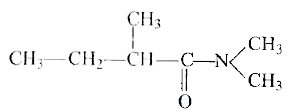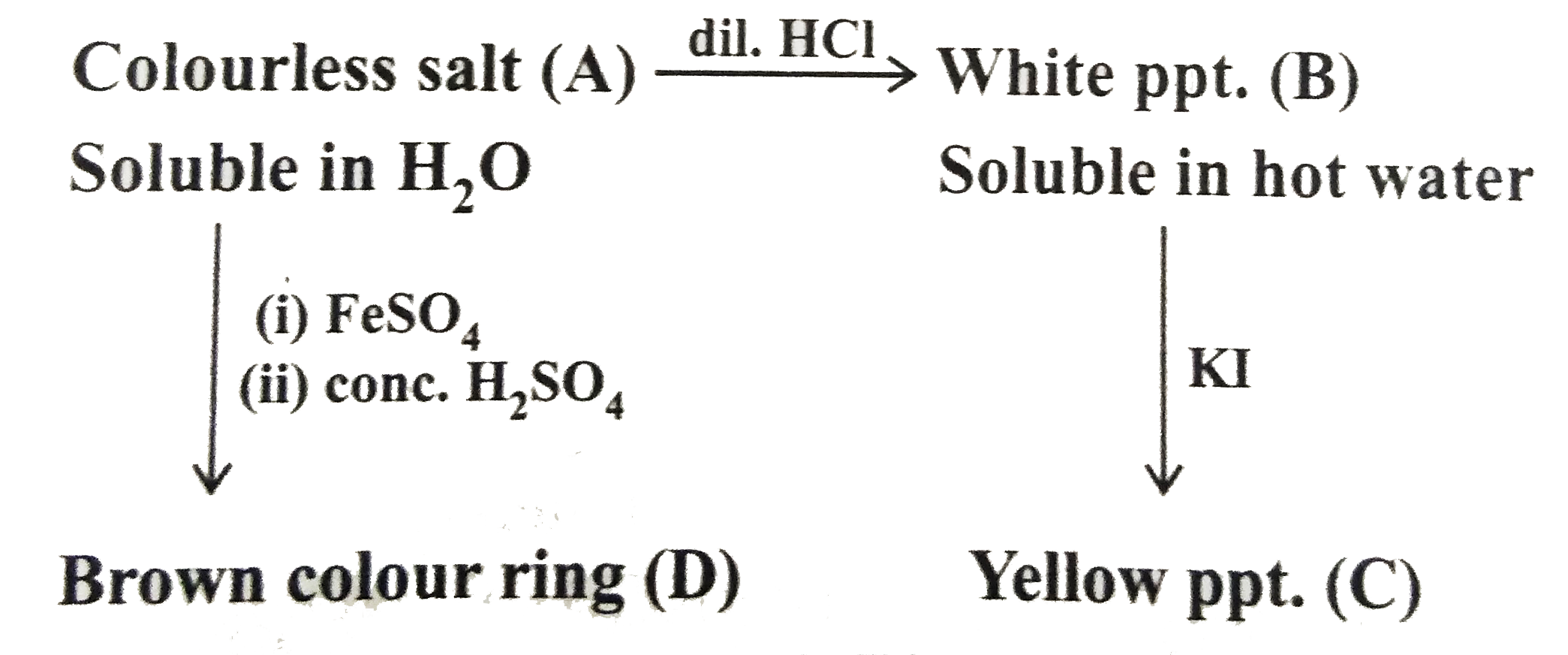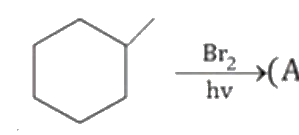colourless salt (A)Δ−−−→740∘C(B)+(C)Cu2+,Δ−−−−−→ blue coloured bead (D)
Identify the compound (A),(B),(C ) and (D).
To solve the problem, we need to identify the compounds A, B, C, and D based on the reactions described in the question. Let's break it down step by step.
Step 1: Identify Compound A
The question states that a colorless salt (A) is heated at 740°C. The compound that fits this description is Sodium Tetraborate Decahydrate, commonly known as Borax. Its chemical formula is:
Na2B4O7⋅10H2O
Thus, we identify:
- Compound A: Na2B4O7⋅10H2O
Step 2: Identify Compound B
Upon heating Borax at 740°C, it decomposes to form two products. One of these products is Sodium Metaborate. The reaction can be summarized as:
Na2B4O7⋅10H2O→2NaBO2+B2O3+10H2O
Thus, we identify:
- Compound B: NaBO2
Step 3: Identify Compound C
The other product formed during the heating of Borax is Boron Trioxide. Therefore, we identify:
- Compound C: B2O3
Step 4: Identify Compound D
When Boron Trioxide (C) is heated in the presence of Copper ions (Cu2+), it forms a complex that results in a blue-colored bead. This complex is known as Copper(II) Borate. The formula for this compound is:
CuB2O4⋅2B2O3
Thus, we identify:
- Compound D: CuB2O4⋅2B2O3
Summary of Identified Compounds
- Compound A: Na2B4O7⋅10H2O (Borax)
- Compound B: NaBO2 (Sodium Metaborate)
- Compound C: B2O3 (Boron Trioxide)
- Compound D: CuB2O4⋅2B2O3 (Copper(II) Borate)
The question states that a colorless salt (A) is heated at 740°C. The compound that fits this description is Sodium Tetraborate Decahydrate, commonly known as Borax. Its chemical formula is:
Na2B4O7⋅10H2O
Thus, we identify:
- Compound A: Na2B4O7⋅10H2O
Upon heating Borax at 740°C, it decomposes to form two products. One of these products is Sodium Metaborate. The reaction can be summarized as:
Na2B4O7⋅10H2O→2NaBO2+B2O3+10H2O
Thus, we identify:
- Compound B: NaBO2
The other product formed during the heating of Borax is Boron Trioxide. Therefore, we identify:
- Compound C: B2O3
When Boron Trioxide (C) is heated in the presence of Copper ions (Cu2+), it forms a complex that results in a blue-colored bead. This complex is known as Copper(II) Borate. The formula for this compound is:
CuB2O4⋅2B2O3
Thus, we identify:
- Compound D: CuB2O4⋅2B2O3
- Compound A: Na2B4O7⋅10H2O (Borax)
- Compound B: NaBO2 (Sodium Metaborate)
- Compound C: B2O3 (Boron Trioxide)
- Compound D: CuB2O4⋅2B2O3 (Copper(II) Borate)
Topper's Solved these Questions
- QUALITATIVE ANALYSIS (ANION)BOOK - RESONANCE ENGLISHCHAPTER - QUALITATIVE ANALYSIS (ANION)EXERCISE - Exercise-2
44 Videos
- QUALITATIVE ANALYSIS (ANION)BOOK - RESONANCE ENGLISHCHAPTER - QUALITATIVE ANALYSIS (ANION)EXERCISE - Exercise-3
10 Videos
- QUALITATIVE ANALYSIS (ANION)BOOK - RESONANCE ENGLISHCHAPTER - QUALITATIVE ANALYSIS (ANION)EXERCISE - Matching List Type
1 Videos
- QUALITATIVE ANALYSISBOOK - RESONANCE ENGLISHCHAPTER - QUALITATIVE ANALYSISEXERCISE - INORGANIC CHMISTRY(Qualitative analysis)
35 Videos
- QUALITATIVE ANALYSIS PART 1BOOK - RESONANCE ENGLISHCHAPTER - QUALITATIVE ANALYSIS PART 1EXERCISE - A.L.P
39 Videos
Similar Questions
Knowledge Check
Consider the following sequence of reactions
AC3H6Cl2alc.KOH−−−−−→ΔBB2H6−−−−−−→H2O2/ΘOHC,Aalc.KOH−−−−−→ΔC The compound A is :A B
B C
C D
D
H3C−CH2−CH3∣CH−C∣∣O−NH2Br2+KOH−−−−−−−−−→ΔA1.CH3I(excess)−−−−−−−−−−−−→2.AgOH,ΔB
The major product (B) is :ACH3−CH2−CH=CH2B CH3C−CH=CH−CH3D
CH3C−CH=CH−CH3D
Colourless salt (A)dil.HCI−−−−→ White ppt. (B)

Iidentify (A),(B),(C ) and (D)
View SolutionASn/HCI−−−−−→BNaNO2−−−−−→HCI,0∘CCHOH−−→DZn dust −−−−−→ΔC6H6, Functional groups in A, B ,C and D respective are :
View Solution Br2−−→hv(A)alc. KOH−−−−→(B)OsO4−−→(C)HlO4−−→(D), Identify 'D'
Br2−−→hv(A)alc. KOH−−−−→(B)OsO4−−→(C)HlO4−−→(D), Identify 'D'
View SolutionMagnesium on heating in air gives (A) and (B). On reaction with water (B) gives a colourless gas (C).(C) when passed through CuSO4 solution, gives a blue coloured solution (D). Identify (C)
and (D).
View SolutionFrom the following reactions. Identify A to F
MgairΔ−−→Colourless solid(A)HCl−−→colourless solution(B)Na2CO3−−−−→White ppt(C)Δ−−→(E)colourlessgas⏐↓Ca(OH)2white ppt(F)+(D)
View SolutionMeCH(A)=O+H2NOH(B)HCOONa−−−−−→Δ(C)+H2O Product (C ) is:
View Solution
